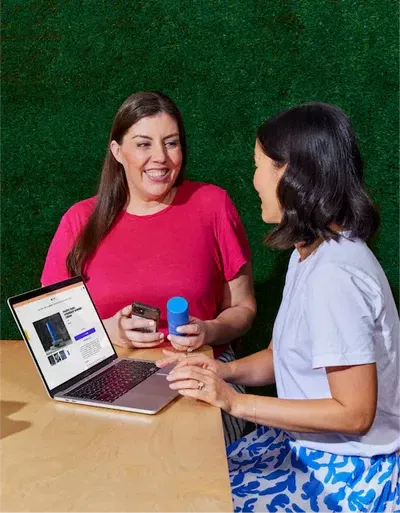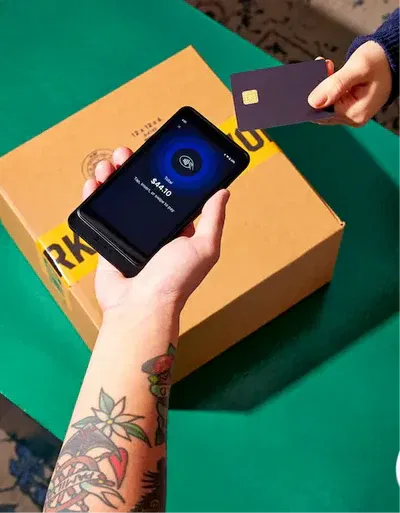How to Use a Fake Shop Maker to Create Demo Stores Easily
How to Use a Fake Shop Maker in 2025: Create a Pretend Website for Fun, Education, or Marketing
Ever wanted to prank your friends with a mock eCommerce site or build a training environment without spending hours on real development? Enter the fake shop maker—an incredibly useful tool to create fake site pages that look just like the real thing.
In this in-depth guide, I’ll walk you through how to use a fake shop maker, show you how to create a fake website page for educational or entertainment purposes, and explore the best free tools, tips, and ethical uses in 2025. Whether you’re a teacher, marketer, designer, or curious student, this post is packed with insight and actionable steps.
Platform / Tool Free Plan Drag-and-Drop AI Features Custom Domain Support Best Use Case Ease of Use Carrd ✅ ✅ ❌ ✅ (Pro plan) One-page pretend stores, resumes ⭐⭐⭐⭐⭐ Webflow ✅ ✅ ❌ ✅ (Paid) UX design mockups, fake eCommerce layouts ⭐⭐⭐⭐ Mockflow ✅ ✅ ❌ ❌ Prototyping wireframes, training demos ⭐⭐⭐⭐ Figma + Plugins ✅ ✅ (Design only) ✅ (via plugins) ❌ Static store visuals and simulated UIs ⭐⭐⭐⭐ Shopify Dev Mode ✅ ✅ ✅ (with apps) ✅ Professional mock store environments ⭐⭐⭐⭐ Durable.co ✅ ✅ ✅ AI Site Builder ❌ Fast AI-powered fake shops and testing sites ⭐⭐⭐⭐ Bookmark ✅ ✅ ✅ AIDA Builder ✅ (Paid plans) Quick, AI-generated pretend shop prototypes ⭐⭐⭐⭐ Google Sites ✅ ❌ (Form-based) ❌ ❌ (Custom DNS only) Basic educational demos and internal tools ⭐⭐⭐ Notion + Super.so ✅ ✅ (via Super) ❌ ✅ (Custom DNS via Super.so) Minimal fake store interfaces ⭐⭐⭐ Framer ✅ ✅ ✅ (Framer AI) ✅ Realistic animations and product previews ⭐⭐⭐⭐
Why Use a Fake Shop Maker?
Before diving into the how-to, let’s first understand the “why.” Why would someone want to create fake site pages or a mock eCommerce storefront?
Common Use Cases:
- 🧪 UX/UI Testing – Designers can test layouts without backend development
- 📚 Educational Demos – Teachers create simulated stores to teach eCommerce principles
- 🎭 Entertainment & Pranks – Fool your friends (ethically) with a fake luxury store
- 💼 Portfolio Showcases – Freelancers show clients concept sites
- 🛍️ Product Validation – Test product-market fit without inventory
Using a fake shop maker allows you to do all this without the overhead of setting up a real online store.
What Is a Fake Shop Maker Exactly?
A fake shop maker is an online tool or app that lets users create a fake website or mimic the appearance of a real online store. Think of it like a sandboxed eCommerce interface—there’s no live checkout or inventory, just simulated content.
You can use it to make a fake webpage that includes:
- Fake product listings
- Faux shopping carts
- Custom branding
- Pretend checkout flow
In short, it lets you make a pretend website that looks real—but functions only on the surface.
Top Tools to Make a Fake Website Page
Here’s a breakdown of some of the most popular and easy-to-use fake shop maker tools currently available:
| Tool | Free Plan | Custom Domain | Drag-and-Drop | Best For |
|---|---|---|---|---|
| Webflow | ✅ | ✅ (paid) | ✅ | UX prototyping and visual mockups |
| Mockflow | ✅ | ❌ | ✅ | Wireframes and fake store demos |
| Carrd | ✅ | ✅ (Pro) | ✅ | One-page pretend store layouts |
| Figma + Plugins | ✅ | ❌ | ✅ (Design only) | Fake design simulations |
| Shopify Dev Mode | ✅ | ✅ | ✅ | Advanced fake storefronts |
| AI Store Builder Free Tools | ✅ | ❌ | ✅ | Beginners experimenting |
📌 Tip: Use Carrd or Mockflow if you’re looking to quickly create a fake website page for demonstration or fun.
Step-by-Step Guide: How to Create a Fake Website Page with a Fake Shop Maker
If you’re ready to roll up your sleeves and make a fake webpage, follow this quick guide.
Step 1: Choose Your Fake Shop Maker
Pick based on your need—speed (Carrd), design fidelity (Webflow), or visual layout (Figma).
Step 2: Create a Free Account
All listed platforms offer a free tier. Sign up and select a “template” or blank canvas.
Step 3: Customize the Store
Add:
- Fake logos
- Product images (use placeholders like Lorem Picsum)
- Product names, descriptions, prices
- Mock shopping cart buttons
Step 4: Save & Share
Publish the site to a free subdomain or export to PDF/image.
🔗 Try Carrd to make a fake website page
Ethics of Using a Fake Shop Maker
Let’s pause here. It’s fun to create a fake site, but where’s the ethical line?
Do:
- ✅ Use for design mockups or UX testing
- ✅ Create educational or entertainment sites
- ✅ Label your site clearly if used in a joke or satire
Don’t:
- ❌ Imitate real brands with malicious intent
- ❌ Use fake sites to scam users
- ❌ Collect real payment or personal info
If your goal is to make a pretend website, make sure it’s done ethically and legally.
Best Features to Look for in a Fake Shop Maker
Not all tools are equal. When choosing your ideal fake shop maker, look for:
- 🧩 Templates – Speed up your setup
- 🎨 Branding Flexibility – Let you use custom logos/colors
- 📐 Realistic Design – Closely mimics real stores
- 💾 Export Options – Save mockups or shareable links
- ⚙️ AI Integration – If you want a fast AI store builder free tool
Educational Applications: Teaching eCommerce with a Fake Store
For teachers and instructors, a fake shop maker offers an invaluable classroom tool. Here’s how:
- Run simulated marketing campaigns
- Teach SEO for product pages
- Simulate inventory and pricing strategy
- Teach students how to create fake site pages without risk
You can even make a fake website page for group projects, encouraging collaboration and creative thinking.
Can You Make a Fake Shop with AI? Absolutely!
Some AI store builder free tools now allow you to generate entire eCommerce templates by answering a few questions. Examples include:
- Durable.co – Uses AI to scaffold an entire business site
- Bookmark – AI-generated layout based on goals
Although intended for real business, you can still make a pretend website with them for mockups or demos.
🧠 Explore Durable’s AI Store Builder
Common Questions About Fake Shop Makers
Can I make a fake website page for a school project?
Yes! Many students use tools like Google Sites or Carrd to create fake site pages for business simulations or mock eCommerce.
Is it legal to create a fake website?
It’s legal if you don’t impersonate real brands or attempt fraud. Always disclose that it’s a simulation.
Can I use real logos on my pretend website?
No. You should never use copyrighted logos unless you have permission. Use placeholders or create your own.
How long does it take to build a fake store?
With a good fake shop maker, you can make a fake webpage in under 20 minutes.
What’s the best free tool for making fake shops?
- Fast & Simple: Carrd
- Visual: Webflow or Mockflow
- AI-Powered: Durable.co
Fake Shop Maker vs Real Store Builder: Key Differences
| Feature | Fake Shop Maker | Real Store Builder |
|---|---|---|
| Checkout Function | ❌ Fake/disabled | ✅ Active with payment |
| Data Collection | ❌ None or dummy only | ✅ Real form submissions |
| Hosting Required | ✅ Free hosting options | ✅ Usually requires setup |
| Use Case | Demos, testing, fun | Real product sales |
| Cost | Free or low-cost | Monthly subscription |
If you’re just experimenting, a fake shop maker is the perfect place to start before building a real business.
🧠 Top 15 Frequently Asked Questions About Fake Shop Maker Tools (2025)
1. What is a fake shop maker and how does it work?
A fake shop maker is a tool or software that allows you to create a realistic-looking storefront or eCommerce page without connecting to a live backend, payment processor, or inventory system. It’s designed to help you create a fake website page that looks like a real shop but doesn’t process transactions.
These tools are perfect for mockups, education, UI/UX testing, presentations, or pranks. You can customize pages with product images, fake checkout flows, and branding to make a pretend website that visually mirrors a functioning store—without the technical overhead of a real one.
2. Why would someone want to create a fake website?
There are several legitimate reasons to create fake site or make a fake webpage, including:
-
🎓 Education: Teachers and students use mock websites for projects or simulations.
-
🧪 UX/UI Testing: Designers test functionality and layout with users before real development.
-
🎭 Entertainment: Create funny, pretend stores for April Fools’ Day or parody websites.
-
🧠 Prototyping: Developers showcase visual ideas to clients or stakeholders.
-
🛍️ Product validation: Marketers simulate eCommerce to gauge interest in new ideas.
A fake shop maker enables all of this while avoiding real transactions, risks, or expenses.
3. How do I create a fake website page quickly and for free?
To create a fake website page quickly and at no cost, follow these steps:
-
Choose a blank canvas or a pre-built template.
-
Add fake product titles, prices, and placeholder images.
-
Customize colors, fonts, and branding.
-
Publish to a subdomain (e.g.,
myfakeshop.carrd.co).
Within 10–20 minutes, you can make a fake webpage that looks legit and professional using any free fake shop maker.
4. Is it legal to use a fake shop maker?
Yes, it is completely legal to use a fake shop maker, provided you’re not engaging in fraudulent or deceptive activities. You can make a pretend website for fun, education, design testing, or training. However, it’s illegal to:
-
Impersonate real businesses
-
Sell counterfeit goods
-
Trick users into sharing personal or payment information
To stay safe and compliant, clearly label your site as a mock or demo if sharing publicly.
5. Which fake shop maker is best for students or teachers?
For academic environments, the best tools to create fake site pages include:
-
Google Sites – Easy to use, free, and tied to G Suite accounts
-
Carrd – Perfect for single-page, quick-deploy projects
-
Mockflow – Great for wireframes and layout planning
These tools are intuitive, support visual learning, and let students make a pretend website in less than an hour.
6. Can I use AI to build a fake store automatically?
Yes, you can use an AI store builder free to generate a mock store layout or content. Platforms like Durable.co or Bookmark’s AIDA Builder ask a few questions and then create a fake eCommerce site tailored to your input.
These tools allow users to make a fake website page using AI-generated product listings, color schemes, and layout blocks, saving you hours of design time.
7. Can I make a fake store that looks like Amazon or Shopify?
With tools like Webflow, Figma, or Shopify Dev Mode, it’s possible to create a fake website that mimics the look of real stores like Amazon or Shopify.
However, you must avoid copying brand logos, trademarks, or proprietary designs. You can make a fake webpage that looks familiar in style, but not identical, to prevent copyright or trademark issues.
8. How can I create a fake merchandise store for fun?
To build a free merchandise store using a fake shop maker, you can:
-
Use Carrd or Webflow to layout fake product pages.
-
Include funny product titles like “Invisibility Cloak” or “Dragon Breath Spray.”
-
Set exaggerated prices for comedic effect.
-
Disable cart functionality or use fake buttons.
This allows you to make a pretend website that entertains your friends or audience without needing any real inventory or eCommerce logic.
9. Can I embed fake shopping carts or product pages in my design mockups?
Yes! With Figma, Mockflow, or Webflow, you can embed fake UI elements like:
-
Product grids
-
Fake add-to-cart buttons
-
Checkout page mockups
-
Price tags and delivery options
These are great for testing with users or showcasing to clients before investing in real development.
10. Is there a way to create fake site pages offline?
Yes. You can use desktop tools like:
-
Adobe XD or Figma Desktop App for static design
-
Bootstrap Studio for offline website prototyping
-
Or even HTML/CSS mockups on your local browser
This is especially useful for instructors or developers needing to make a fake webpage for demos without internet access.
11. Can I use fake shop makers to practice building real stores?
Absolutely. A fake shop maker is a low-risk environment where you can:
-
Practice layout design
-
Experiment with content writing
-
Understand user flow
-
Work on branding concepts
Once you’re confident, you can graduate to a real eCommerce platform like Shopify, WooCommerce, or Squarespace.
12. What should I include in a pretend shop website?
When you make a pretend website, include:
-
Brand logo (fictional or placeholder)
-
Navigation menu
-
Hero banner or featured product
-
Grid of fake products with pricing
-
About section
-
Contact form or fake checkout page
This gives your fake website page a realistic appearance that serves training or display purposes.
13. How do fake shop makers compare to real eCommerce builders?
Here’s a quick table comparison:
| Feature | Fake Shop Maker | Real eCommerce Builder |
|---|---|---|
| Checkout Enabled | ❌ (Fake) | ✅ (Live transactions) |
| Payment Gateway | ❌ | ✅ (Stripe, PayPal, etc.) |
| Use Case | Mockups, demos, fun | Real online businesses |
| Cost | Free or low-cost | Subscription-based |
| Setup Time | < 30 minutes | 1–5 hours |
Use a fake shop maker when you need speed, cost-efficiency, and no live sales.
14. Can I make a fake website look real enough to fool people?
Technically, yes—you can make a fake webpage that looks convincing. Tools like Webflow or Framer allow animations, hover effects, and responsive layouts that mimic real store functionality.
However, you should never use this for malicious purposes. If your intent is to prank or surprise friends, always include a disclaimer or “just for fun” label somewhere on the page.
15. Where can I find templates to start a fake shop faster?
You can find ready-to-use templates for fake shop maker projects on:
-
Figma Community: Search for “eCommerce” templates
-
Webflow Showcase: Cloneable templates for storefronts
-
Carrd Templates: Available through Carrd’s community or pro plans
-
BootstrapMade or HTML5UP: Free static HTML store templates
These help you create a fake website page that’s beautifully designed without needing to start from scratch.
Final Thoughts: Should You Use a Fake Shop Maker?
If you need to create a fake website page, whether for fun, teaching, or design exploration, a fake shop maker is your go-to solution in 2025. With no coding skills needed, zero costs, and multiple use cases—from UX design to education—you can make a pretend website that looks convincing without ever going live.
It’s fast. It’s safe. And when used ethically, it’s incredibly effective.
✅ Action Steps:
- Choose a fake shop maker tool (Carrd, Webflow, Durable)
- Select a template or start from scratch
- Add your products, branding, and dummy info
- Publish and share (privately or publicly)
🔗 Bonus Tip: Use Figma Templates for eCommerce for high-quality visual mockups.
You’re now fully equipped to create fake site layouts that engage, teach, and inspire—without needing a credit card or real inventory.
Let me know if you’d like this article expanded with FAQs, tool comparisons, or HTML formatting for embedding in your blog!




